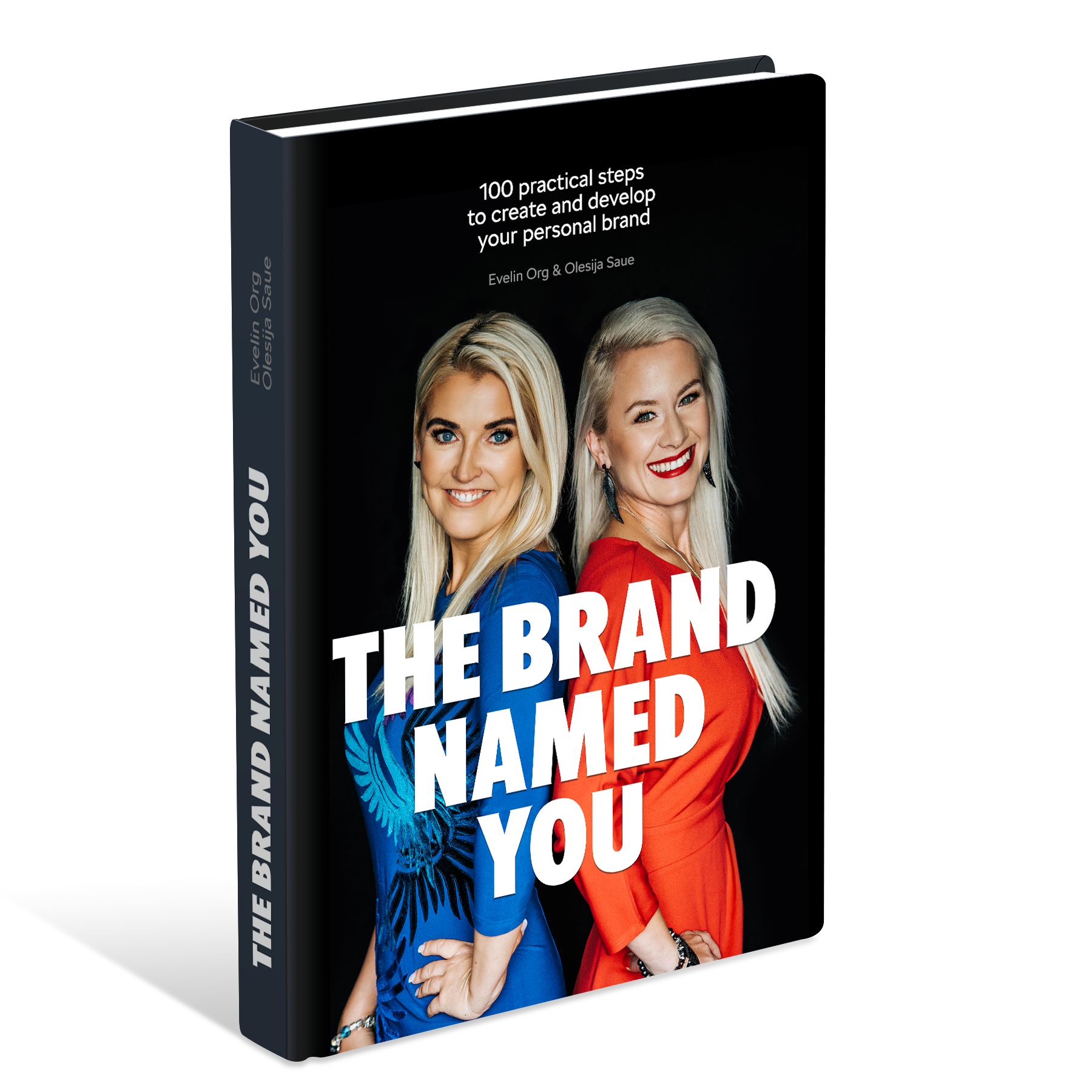

*Shipping cost would be added depends on your location
What will you learn from this book?
Social media has given us all equal opportunities, but the conscious use of these opportunities and of their potential is in our own hands.
The purpose of this book is to help you understand your personal brand in its entirety. We will help you create a clear vision of where, in which direction and why to move. We will draw up a specific action plan for your personal brand so that you can achieve as well as measure your goals.
The aim of this book is to help you think through and create your own ideal personal brand, and once that has been done, to also package it attractively and market it effectively.
It is people who do business with each other, not companies. So, this book is meant primarily for people who want to grow the sales, profit and value of their company with the help of personal branding of themselves, their employees and the company’s general manager.
A strong personal brand helps you to stand out and find customers in whatever field – be it the selling of training courses, business counselling, real estate, B2B sales and export, politics, cooking, personal training, beauty services, designing web pages, training dogs or something completely different that you want to focus on in the future.
Yes, in the world there are hundreds, if not thousands of books written on this topic. However, despite the increasing popularity of personal branding, this book is the first one to actually offer you a very clear, thorough and hands-on tools and step-by-step process for creating your personal brand and developing it.
What is inside ?
- Why everybody who works for a company plays an essential role in developing the company’s brand?
- How to encourage your employees to share posts about their company also on their own social media channels?
- What is the the easiest and most effective way for creating a strong company brand?
- How to make your employees your best sales and marketing channel?
- Why you absolutely must invest in personal branding of your employees?
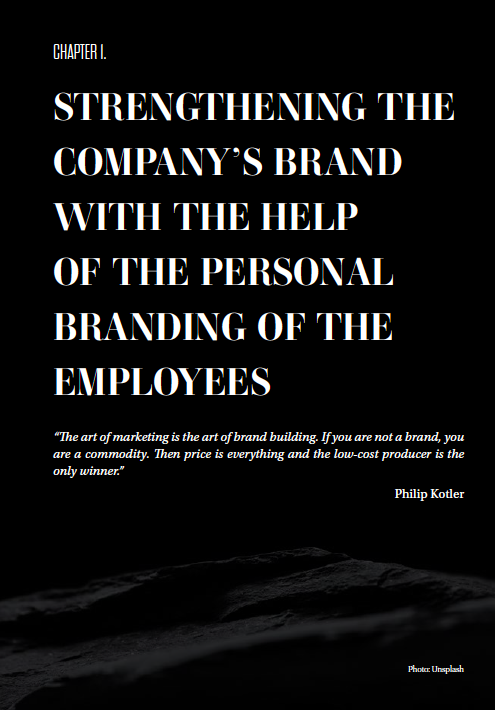
- Why top-level managers and owners should be developing their personal brand and be visible on social media?
- And what happens to those, who don’t?
-
What advantages do CEOs with strong personal brands bring to their companies?
-
What are the common obstacles and how to overcome them?
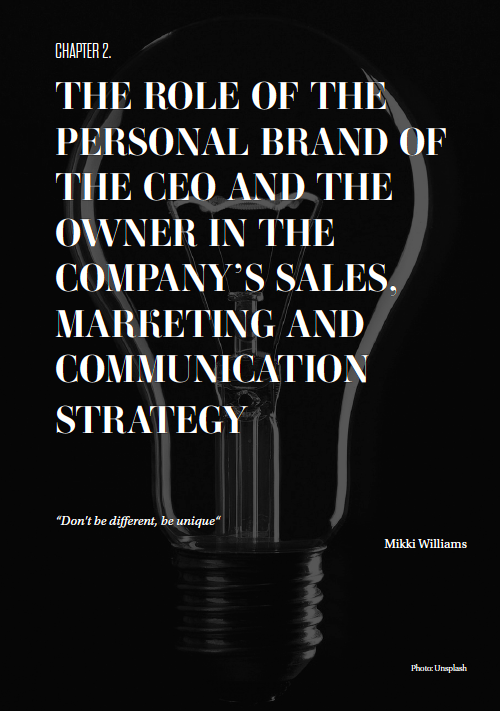
- What is personal brand substance and personal brand package?
- What is the difference between substance and package and which one is more important in personal branding?
- Seven most important questions of personal branding
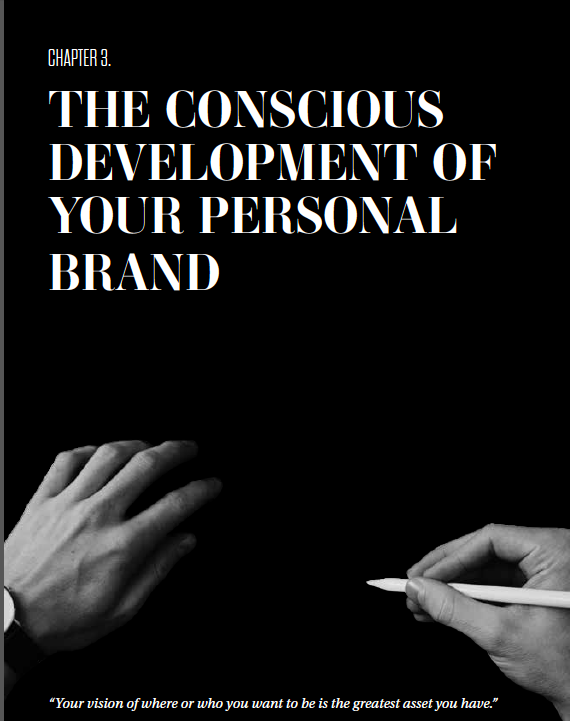
In order to start developing your personal brand, you first need to map the current situation and assess the starting position.
- How clear your goal of developing a strong personal brand is today?
- Who your personal brand should be aimed at and for whom you want to be visible?
- Do you know who your competitors are?
- What channels do your customers use?
-
How clear your unique value proposition is at the moment.
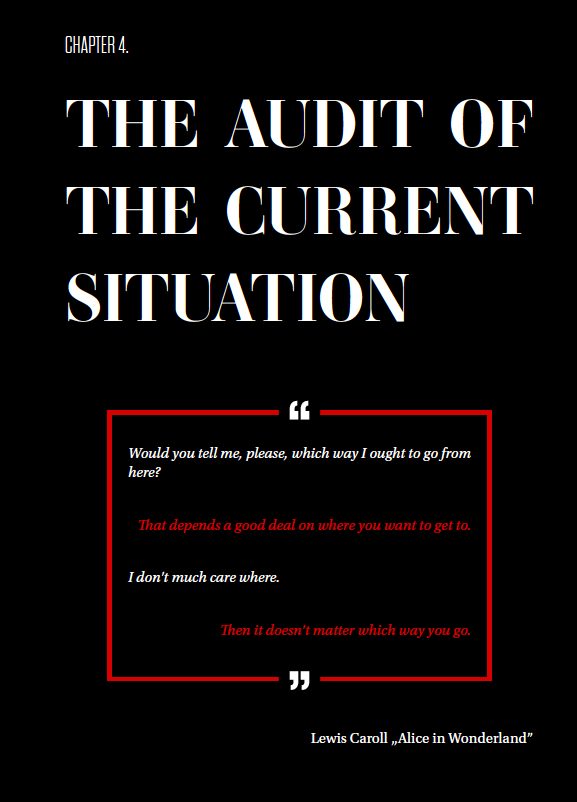
This chapter will help you understand what do you want to achieve with your personal branding.
The most important function of goals is to give your actions a long-term and broader meaning. Personal branding goals determine where you are going and give you a sense of why you are heading there. Goals help you stay on track, focus on what matters, and make the right choices. Goals show what is important and what you should focus your time and energy on to make the most of it.
This chapter will help you understand what do you want to achieve with your personal branding.
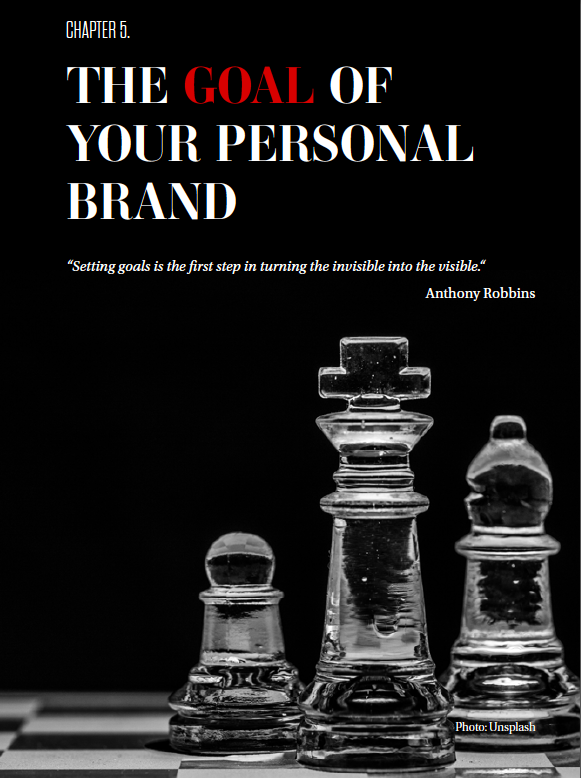
Our greatest opportunities lie outside our comfort zone. In fact, they probably live not only in our fear zone, but often in our panic zone. They demand that we do things that are uncomfortable for us. They require us to do things that we cannot (yet) do. They demand that we do things we don’t want to do. Most of our biggest dreams frighten us A LOT most of the time. They seem so distant and unachievable that it seems easier not to start at all. Stepping out of the comfort zone is like jumping into an abyss- not knowing if you have a parachute with you or not. And even if you do, will it open?
This chapter focuses on actionable steps to get out of your comfort zone and finally get moving towards your dreams.
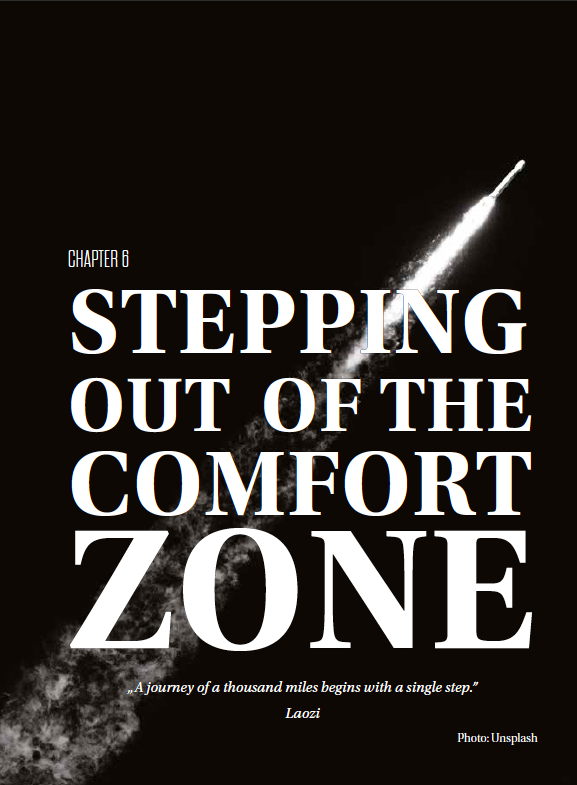
In order to be different, stand out, and be remembered, you need to know and emphasize your strengths very well. You need to think about and analyse everything you can do really well. Or also what you can do better than others. This chapter will help you find the strengths of your personal brand.

Success is most likely experienced by people who can use their strengths and skills to the maximum. At the same time, knowing your own weaknesses can add confidence as awareness creates opportunities for choice. By knowing yourself, you can consciously exhibit your strengths and compensate for your weaknesses – both sides of the coin play an important role in developing your personal brand. This chapter will help you identify any weaknesses that may be holding you back and choose the most critical to start working on.
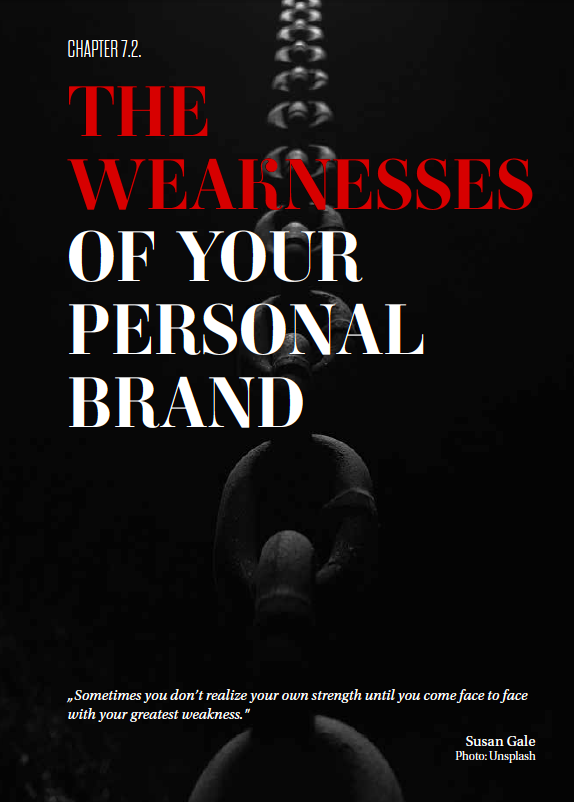
Just like the strengths of the brand, values can be effectively used to create a brand identity. Strong brands are emotional because they touch both the heart and the mind. Today, different social, ethical and environmental values have become particularly important. They should be genuine and foremost relevant to yourself, and via this also your target group.
The purpose of this chapter is to find the values that you truly believe in, that are relevant to you and your target audience, and that help you stand out clearly and strongly among others. These values are intended to motivate you to develop your brand, but also to be very clear on what to do and what not to do. When these values appeal to you, they also appeal to your potential customers, help you stay focused and make the right choices.

We spend a significant part of our lives at work. Studies show that it is as much as 50-70% of our waking time, or an average of 90,000 hours, when summed up.25 That’s a lot, but unfortunately, many of us are doing jobs that we really do not like at all and that we are not happy with. It works against us every day because passion increases our focus and makes things happen. Gallup, an international research firm, states in its “World Poll” survey that as many as 85% of employees hate their daily work.26 Passion and work are often two completely mutually exclusive concepts. Work is the eight-to-five tiresome obligation you do to make money, while passion is something you enjoy in your spare time. But should it still be so? What if you did what you really like? What if your job was your passion? Each of us is different, and so are our passions. But we often don’t know what it is. This chapter takes you through the process of finding your passion.

Personal brand is the perception others have of you, including your style and lifestyle. Clothing and other image-related factors play a very important role in branding. They give you the opportunity to stand out from the crowd by simple means. A very large part of purchasing decisions are made by the first impression.
Branding strategy can help you create the image you want for your personal brand, which in turn helps you attract customers and “fans”, both on social media and outside of it. No matter how nice an introduction a person compiles about himself/herself, what matters the most in creating the first impression is the appearance and the surrounding environment. If you want to create a first impression with your personal brand, you also need to pay attention to your appearance and think it through for yourself. And in orderto be authentic, you need to create your lifestyle around your brand. This chapter gives you tools necessary to define your style.

To become great, we all need inspiration. Inspiration can come from walking in the nature, sitting by the sea or drawing and painting, but it can also come from people. You don’t always have to go far to find inspiration, it can be near you. Most of us have someone who inspires us. This chapter will help you find people who inspire you and distill and apply what can you learn from them.

In personal branding, it is very important to stand out among your competitors and be unique. Unique particularly in what customers value the most. But to succeed, you first need to get to know your customers. This is necessary to clearly understand to whom and how to offer your product or service. The purpose of this chapter is to find the right customers for you and to know who you are not to deal with. You always have a limited amount of time and money. To avoid wasting them, you need to learn to target precisely.
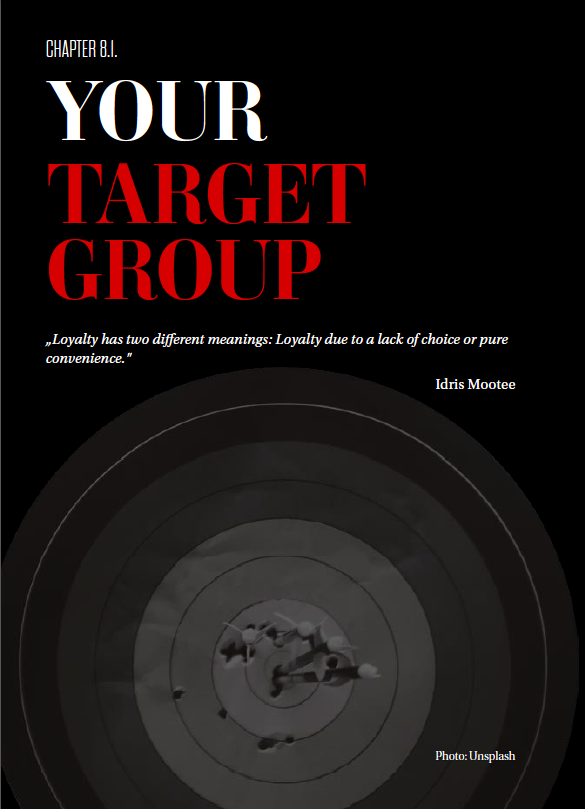
The most immediate benefits of a personal brand can be measured by the growth in customer base and profit figures. More broadly, and more importantly, personal brand awareness must be seen as the value it brings to the customer. In addition to making a profit, it is also important to matter for your customers. You become important when you do something important for others. Only if you understand your customer’s motivation, or the reason why they are buying your product or service, can a truly good product orservice be offered.
In this chapter, we will talk about the unique selling proposition (USP), or elevator pitch or value proposition. This is important because we often know ourselves why someone should buy our product or service from us, but it is difficult to make it clear to our customers.

What others say about you or what you find about yourself on the Internet is very important, but it is even more important what you say about yourself and how you do it. This is an important part of branding, or one of the activities that builds a personal brand in people’s minds and makes them act. Personal branding develops in people’s minds over a period of time as a result of communication. You can create your brand by designing, and constantly developing your unique story, telling it and adding to it and keeping it updated. This chapter will help you go through the full process.
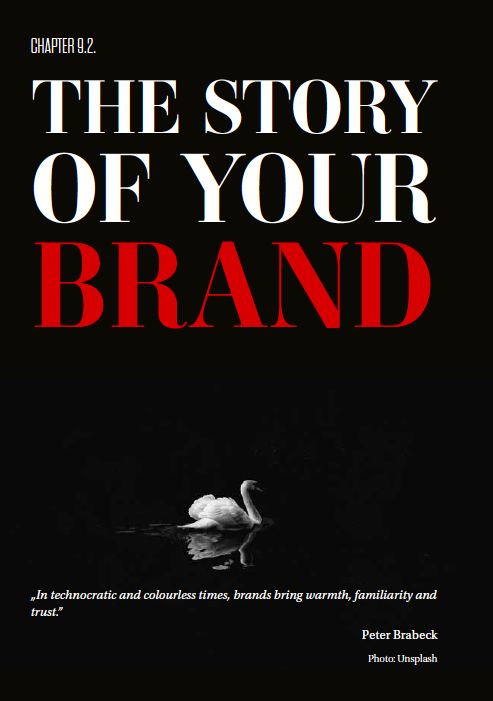
It is impossible to ignore social media and its impact on businesses. The same goes for personal brands. Social media today is a business card for every company and person and creates incredible opportunities. It gives an idea of a business or person and shapes your perception. Like other channels, it must represent you or your business and match your values and the desired image. People search for information about you on Google and social media, and subconsciously shape their opinion of you based on what they find. In this chapter you will find out what is Social Selling and how to make the most of it. We will also look at different Social Media channels and compare 3 most important ones (Facebook, Instagram, LinkedIn) to help you choose the right channels among all the various platforms.

In this chapter, we will develop together your online strategy for your personal brand. Note that your target group may differ from one channel to another, and therefore your personal brand image may also differ. However, even if the target group and goal are the same across all channels, think through the strategy separately for each channel. Depending on the channel, for example, the choice of format, posting frequency, language, visual style, etc. can vary greatly.
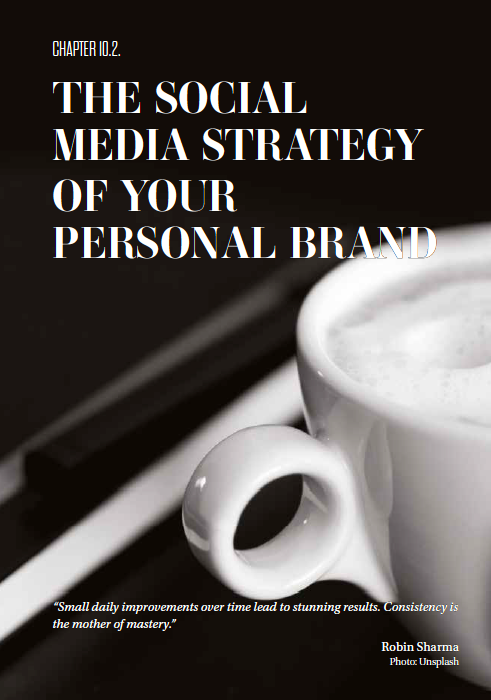
Advertising, public relations, logo, visual identity, invoice design, website design and providing quality products and services are all part of branding. The strength of your brand depends on what your customers learn, feel, see and hear about your personal brand over time through various channels. In order for your personal brand to stand out, it needs to be targeted to the right focus group through appropriate channels. Social media is a very powerful channel, but you should cross-market with other sales and marketing channels to get the best results. The choice of channels is constantly changing, and it is happening at a tremendous speed. In order not to waste your time and money aimlessly on different channels, you need to think and develop a strategy that suits your personal brand. There is no easy way to make this choice, but this chapter will help you get a lot closer to the truth.

Content is one of the most important ways to create awareness and increase visibility (SEO) and educate potential consumers. We live in an age of content overload and information noise, and producing the right content for the right target group is therefore essential. You have to be consistent and think clearly about what you are doing. People and brands that are telling their emotional, personal and human stories find a direct path to customers’ hearts and create a more personal relationship with them than with their competitors. Storytelling enables you to interact with your customers on an emotional level, offering inspiration, motivation, and an opportunity to educate and develop yourself.
This chapter will you put together your content strategy, that appeals to your target group and helps to achieve your personal branding goals.

Now that you have both content strategy and content topics in place, we ask you to go even further in detail and compile a calendar for posting your content topics. This may seem like a tedious activity to you, but we promise – it will save you a lot of time in the future, and instead of random posts, the content of your posts will support your personal brand strategy. In this chapter, we’ll give you some inspirational examples and keywords that you can link to your posts. Over the years, we’ve analysed the social media accounts of hundreds of different companies and put together a list that you might find helpful. Read them through, and then start filling in your content calendar.

Developing your own brand is more like a marathon than a sprint, but the more you invest your time or money in something, the more important it is to also measure the results. Overall, the success of branding is quite difficult to measure. Gut feeling is often used for this purpose, but you cannot be sure whether it is right or not. Another very common way is to conduct a survey. This is something larger companies can afford. In the case of personal branding it is quite time-consuming or expensive.
This chapter will help you definewhat metrics are important to you, and how and by what time you will achieve them. If you do not do this, you will simply be wasting your time and money and will not be able to set the next steps in the right direction.
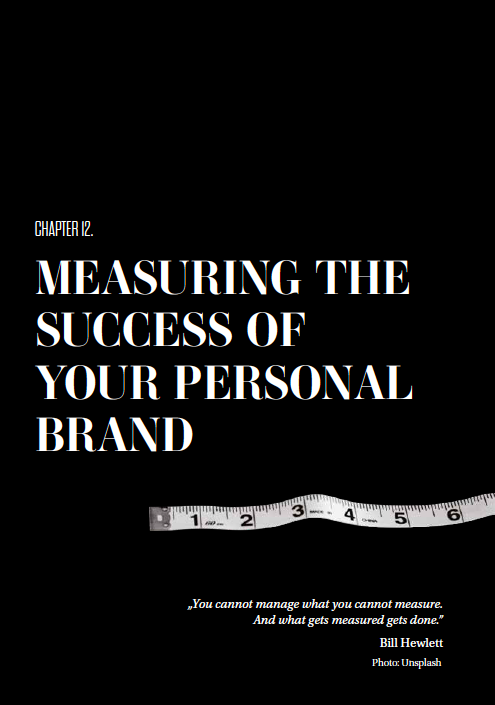
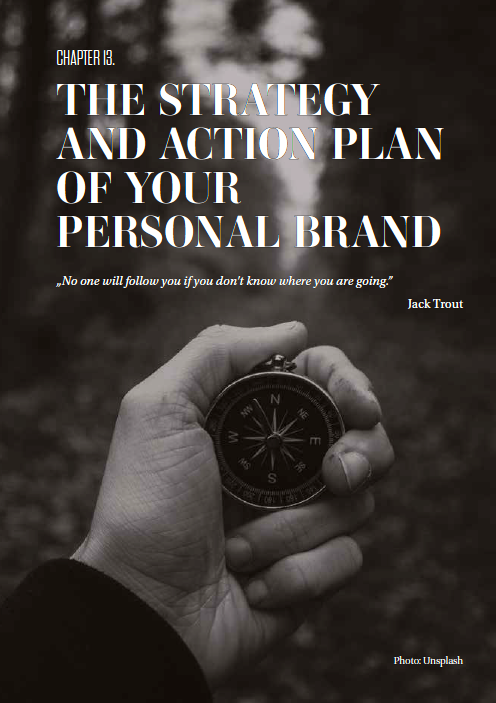
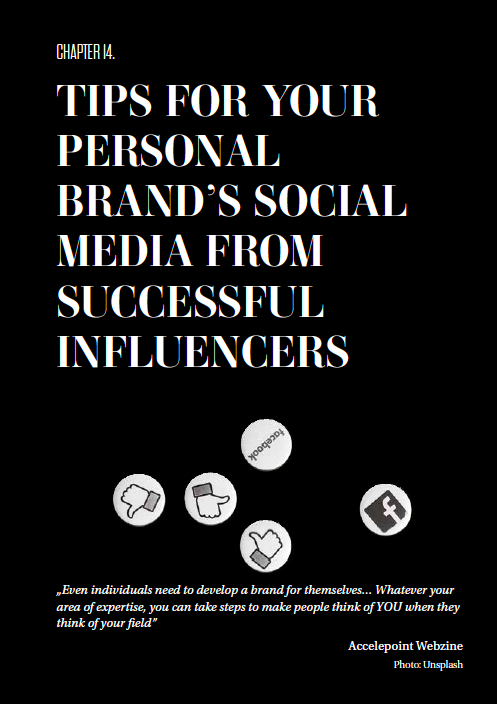
If you want to find new customers or grow the sales of the company, your potential customers must associate your personal brand with trust, professionalism and long-term success. Be it your own company or your employer, successful personal branding helps to save on marketing costs and grow the company’s sales, profit and value with very simple, yet very effective activities.
In addition, a strong personal brand has other major advantages, such as:
• the growth of turnover and profit
• loyal customers and repeat purchases
• finding new customers
• a rise on the career ladder
• free advertising
• visibility via interviews, blog posts
• invitation to speak and the creation of an expert image
• partnership
• cross-marketing
• standing out among the competitors
• credibility and reliability
ABOUT THE BOOK AUTHORS

For 15 years, sales and marketing has made Evelin’s eyes sparkle. She believes in lifelong learning and, in addition to a master’s degree in management and marketing, she is constantly developing herself in various fields. Her latest job was that of sales and marketing manager of Sokos Hotels Tallinn. About a year ago she decided to give up her job, leap into the unknown and be an entrepreneur. During the first year she started two companies. One of them, Your Brand Up Studio (www.brandup.ee) helps companies of various sizes succeed in sales and marketing. Its specific focus is on branding as well as on other new trends in marketing such as identity, content, experience marketing and service design. In addition, she has organised training seminars and consultations in these areas. Another company deals with Estonishing Stay guest apartments (www. estonishstay.ee) that are unique in Estonia. These apartments offer, on the one hand, the comfort of a luxury hotel, and on the other hand, the homely, warm feeling and the hospitality characteristic of the philosophy of Airbnb. Since Evelin has found that yoga is a good way for her to keep balance in her fast-paced life, she also organises the “Time for yourself” yoga retreats.
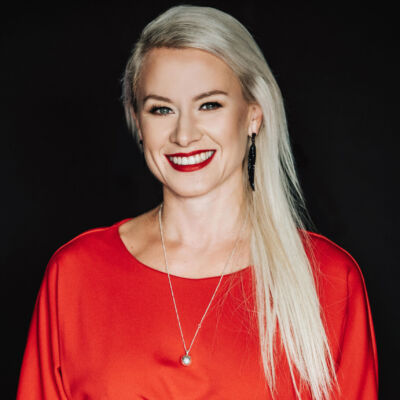
Olesija is the strategist and trainer at Goal Marketing (www.goal.ee). Olesija holds a master’s degree in international business management and has been involved in entrepreneurship in the B2B/B2C field for more than ten years. During the past five years she has consulted on and trained a large variety of Estonian and international companies, has been involved in personal branding of CEOs and managers, and assisted hundreds of companies to reach their goals with the help of social media. Her special passion is social sales, that is integrating the opportunities of social media into sales processes. Olesija believes that business takes place between people, not companies and focuses mostly on the active and conscious role of managers, owners and employees in social media-based marketing. The personalization of brands, or making them more human, and the branding of persons is her focus – making people stand out and attractively packaging their value proposition. She believes these are two sides of the same coin and focuses her strategies on marketing and social media.
WHAT OTHERS SAY ABOUT THE BOOK

Olesija Saue and Evelin Org have compiled a real treasure box. A step-by-step journey towards getting to know your various aspects better will help the readers to be truly themselves. It also helps you in choosing the right goals and achieving them. The greatest value of the book lies in the one hundred practical tasks that, if you take time to think about them and do them, will surely help you in creating and developing your personal brand.


At the beginning of the 21st century, it was important that the journalist had your number in the phone memory so that you could comment on one or another event. Today, you can / must create events, messages and news and then purposefully feed them into the media. Be visible and interesting, tell your story about how YOU can help others succeed.

In today’s fast-changing world, learning by doing is playing an increasingly important role. The DNA of this book is definitely learning by knowing how to do and sharing valuable lessons. So the bike doesn’t have to be reinvented by the reader, just jump on the saddle and start riding. A good ride to all readers!

I have been dealing with personal branding for 10 years, keeping the topic quietly ticking in the outskirts of communications and public relations like a Shetland pony in a fancy horse enclosure. Interesting, insignificant, does not disturb anyone. When I started reading Olesija’s and Evelin’s book, I was fascinated from the very first chapter. God, how good it was! This first book is absolutely essential to anyone who wants to succeed in business.

Yes, the impact of a brand is difficult to measure. Yes, it may seem at times like a trivial thing to deal with. However, if you don’t deal with it consciously, it will still be there. And if you want your brand to stand out and be what you want it to be, then my recommendation is simple: buy the book, read it, apply the tips and reap the benefits, because there’s no question about the fact that the book you hold in your hand is practical and valuable.

The visually pleasing and engaging book expresses the ‘face’ of its authors. A clearly written study material with many examples serves as the Google Maps in today’s ever-changing business world, in the hands of entrepreneurs looking for or improving their identity. The future business landscape will be characterised by personal brands. It’s the story that matters and the person behind the story.
P.S. Social media can ignite or destroy your business – the user’s guide “The Brand Name You” is of great help for your success.

I have long been waiting for a book that offers not only a good reading but also invaluable practical experience. Extremely thorough and professional, yet easy to read and enjoy. As I was reading, it seemed like everything needed has been said in one book. I hope, of course, that this is not the case and that there will be more books by Evelin and Olesija. I also dare to say that this book is a must-have for anyone who signs their name under their work. The topic is so vital that it really does not matter whether you want a lot of attention or work quietly. You can’t get over or around the brand that has YOUR NAME.

So far, personal branding has seemed to me a completely strange topic. However, as I read the book, a number of observations struck me. The book confirmed my subconscious realization that the people you are interacting with create for themselves a whole picture or image of you. The book is for you if you are a trendsetter, opinion leader or just want the image others create of you to meet your expectations.
The book is packed with practical tips for creating the desired personal brand and is fun and easy to read. This will help you think through the values and messages you want to convey about yourself. Even if you are already familiar with personal branding and an active social media user, this book is worth reading – you will certainly find more thoughts and tips to use in conveying your ideas.
I wish you success in creating your own image! It’s definitely going to be very good, just the way you want it to be. You just have to be honest to yourself and others.

Olesija and Evelin have written a book that should be read by different audiences. Above all, those for whom it is important to manage their own image. Leaders, politicians, advisors – everyone who needs to be well understood. In an increasingly busy world, self-branding is a basic necessity, because as the classics say, life is spinning at high speeds. The more automatically we are perceived and understood, the more likely our actions will be noticed. The book is written in a practical and concrete manner. To the point. You can get ideas from here in a matter of hours. A full day is not needed.
GET YOur COpy NOW & TAKE YOUR BUSINESS TO THE NEXT LEVEL!